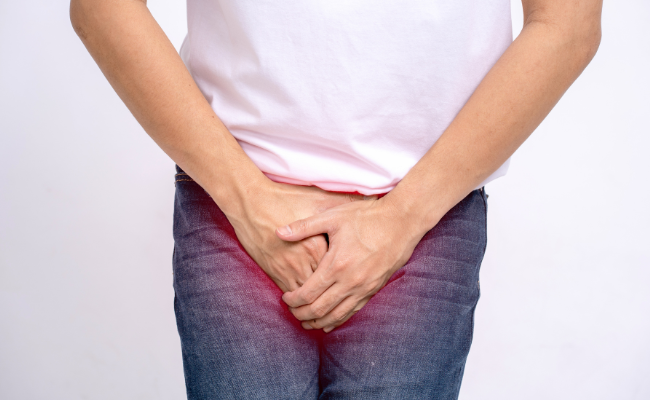How to Treat Benign Prostatic Hyperplasia?
- January 03, 2024
- No Comments

What is Benign Prostatic Hyperplasia (BPH)?
Prostatic Hyperplasia (BPH) is a non-cancerous condition characterized by the enlargement of the prostate gland, a walnut-sized organ located below the bladder and in front of the rectum. This gland surrounds part of the urethra, a tube responsible for carrying urine and sperm out of the body. As the prostate grows in size, it can impede the passage of urine and ejaculate through the urethra. While BPH itself is not cancerous, the symptoms associated with it may suggest more serious conditions, including prostate cancer. It is crucial for individuals experiencing symptoms of BPH to seek medical attention to accurately diagnose the underlying cause and determine appropriate treatment options.
Why Does BPH Occur?
The exact cause of BPH is not fully understood, but it is believed to be linked to hormonal changes associated with aging. The male hormone testosterone and its byproduct, dihydrotestosterone (DHT), play a crucial role in prostate growth. As men age, the balance of hormones changes, leading to an overproduction of DHT, which contributes to the enlargement of the prostate.Genetics, inflammation, and lifestyle factors such as obesity and lack of physical activity may also play a role in the development of BPH. Understanding the underlying factors can help in devising effective treatment strategies.
How Does BPH Affect Men?
BPH can cause a range of urinary symptoms, affecting the quality of life for many men. These symptoms may include:
- Frequent Urination: The enlarged prostate can squeeze the urethra, causing a need to urinate more often, especially during the night.
- Urgency: Men with BPH may experience a sudden, strong urge to urinate, making it difficult to reach the restroom in time.
- Weak Stream: The flow of urine may become weaker, and emptying the bladder might take longer than usual.
- Incomplete Emptying: Some men may feel as if they haven't completely emptied their bladder after urination.
- Straining: BPH can lead to straining during urination, indicating increased resistance in the urinary flow.
- Dribbling: After urination, a dribbling of urine may occur due to incomplete emptying of the bladder.
Understanding these symptoms is crucial for seeking timely medical intervention and preventing complications related to untreated BPH.
Treatment Solutions for BPH:
Several effective treatment options are available for managing BPH and alleviating associated symptoms. These treatment solutions can be categorized into lifestyle modifications, medications, and surgical interventions.
Lifestyle Modifications:
- Healthy Diet: Adopting a diet rich in fruits, vegetables, and whole grains while limiting caffeine and alcohol intake can contribute to overall prostate health.
- Regular Exercise: Engaging in physical activity can help manage weight, reduce inflammation, and contribute to prostate health.
- Bladder Training: Scheduled bathroom breaks and gradual increases in the time between urination can improve bladder control.
Medications:
- Alpha-Blockers: These medications relax the muscles around the prostate and bladder neck, improving urine flow and relieving symptoms.
- 5-Alpha Reductase Inhibitors: These drugs reduce the levels of DHT, thereby shrinking the prostate and relieving symptoms over time.
- Combination Therapy: Some individuals may benefit from a combination of alpha-blockers and 5-alpha reductase inhibitors for enhanced efficacy.
Surgical Interventions:
- Transurethral Resection of the Prostate (TURP): This surgical procedure involves removing excess prostate tissue to relieve urinary obstruction.
- Laser Therapy: Various laser techniques can be used to shrink or remove prostate tissue, providing relief from symptoms.
- Transurethral Incision of the Prostate (TUIP): This procedure involves making small cuts in the prostate to widen the urethra and improve urine flow.
Benefit Points of BPH Treatment:
- Enhanced Quality of Life: Effectively treating Benign Prostatic Hyperplasia (BPH) leads to a significant improvement in the overall quality of life for affected individuals.
- Prevention of Complications:Timely intervention in BPH management can prevent potential complications associated with the condition.
- Optimized Urinary Function:BPH treatment aims to optimize urinary function, alleviating bothersome symptoms like incomplete emptying, straining, and dribbling. By restoring a more efficient urine flow, individuals can experience relief from discomfort and the inconvenience associated with compromised urinary function.
- Reduced Risk of Acute Urinary Retention: One of the benefits of BPH treatment is a decreased risk of acute urinary retention. This condition, where the bladder cannot empty properly, can lead to severe discomfort and necessitates immediate medical attention.
- Customized Treatment Plans: Healthcare professionals tailor treatment plans to individual needs, taking into account factors such as age, overall health, and the severity of symptoms.
- Improved Sleep Patterns: Frequent urination, particularly during the night, is a common symptom of BPH. Successfully managing the condition often results in improved sleep patterns, as individuals experience fewer disruptions due to nocturnal bathroom visits. Restful sleep contributes to better overall health and well-being.
- Psychological Well-being: The relief of BPH symptoms through appropriate treatment positively impacts psychological well-being. Addressing issues like urgency and difficulty in urination can reduce stress and anxiety associated with these symptoms, promoting mental health and a sense of control over one's bodily functions.
- Preservation of Sexual Function:BPH treatment takes into consideration the impact on sexual function. By effectively managing symptoms, individuals are more likely to maintain normal sexual activity without the interference of urinary issues. This preservation of sexual function contributes to a fulfilling and satisfying lifestyle.
Comments (0)